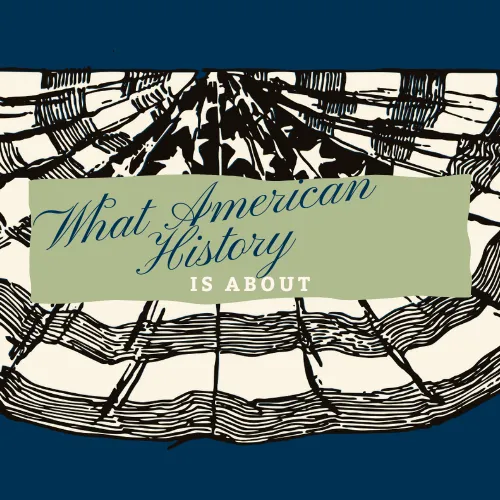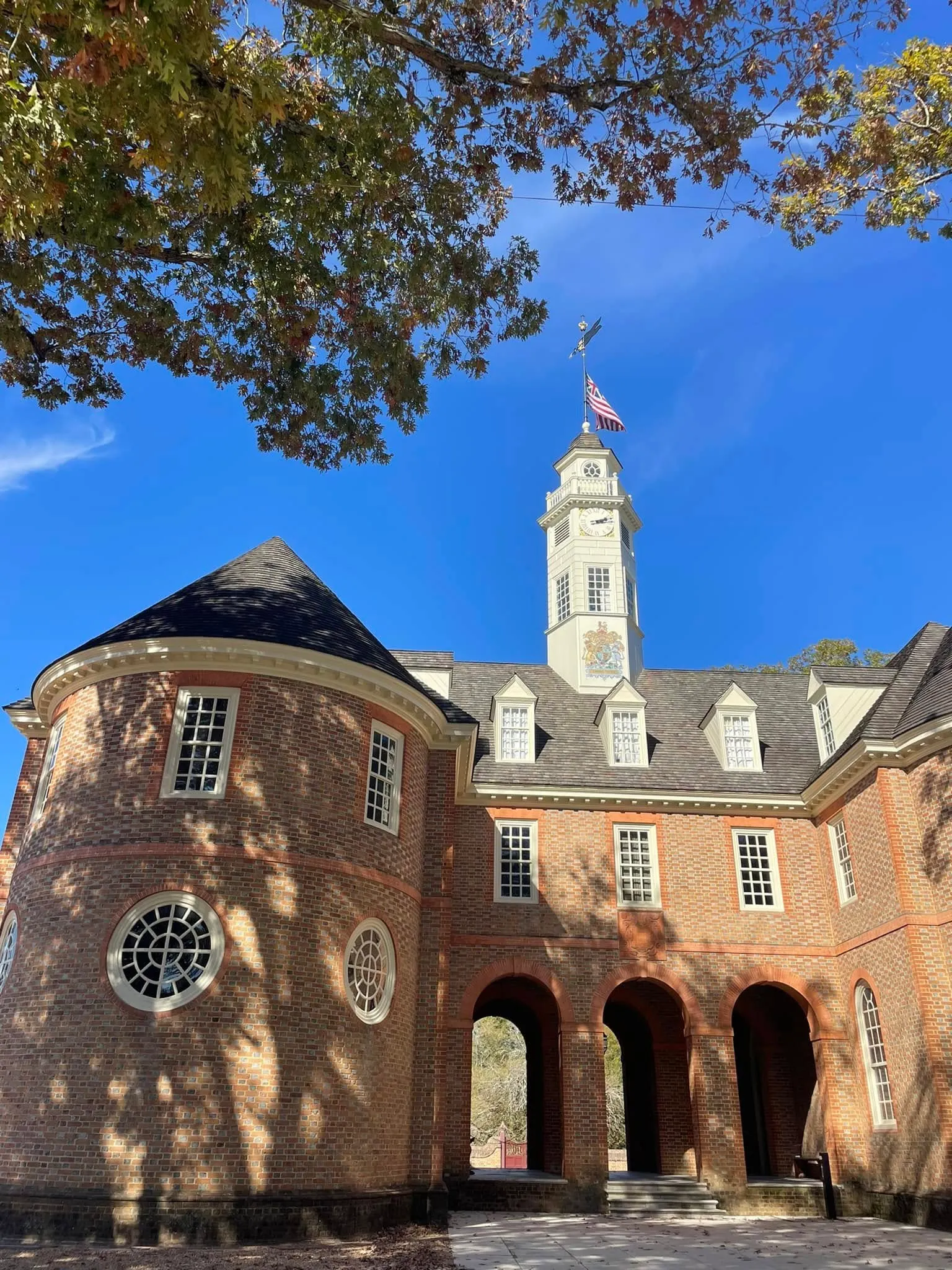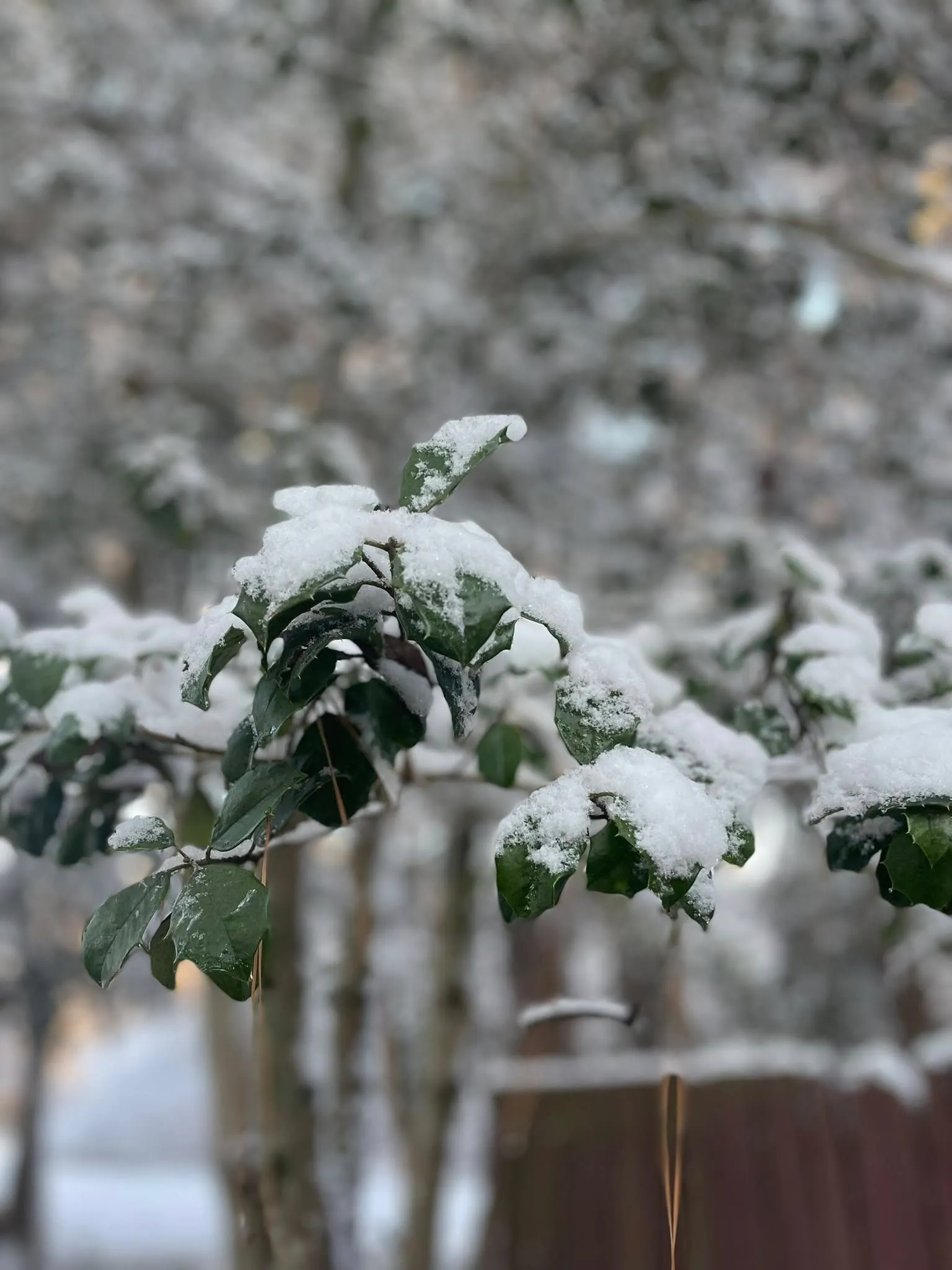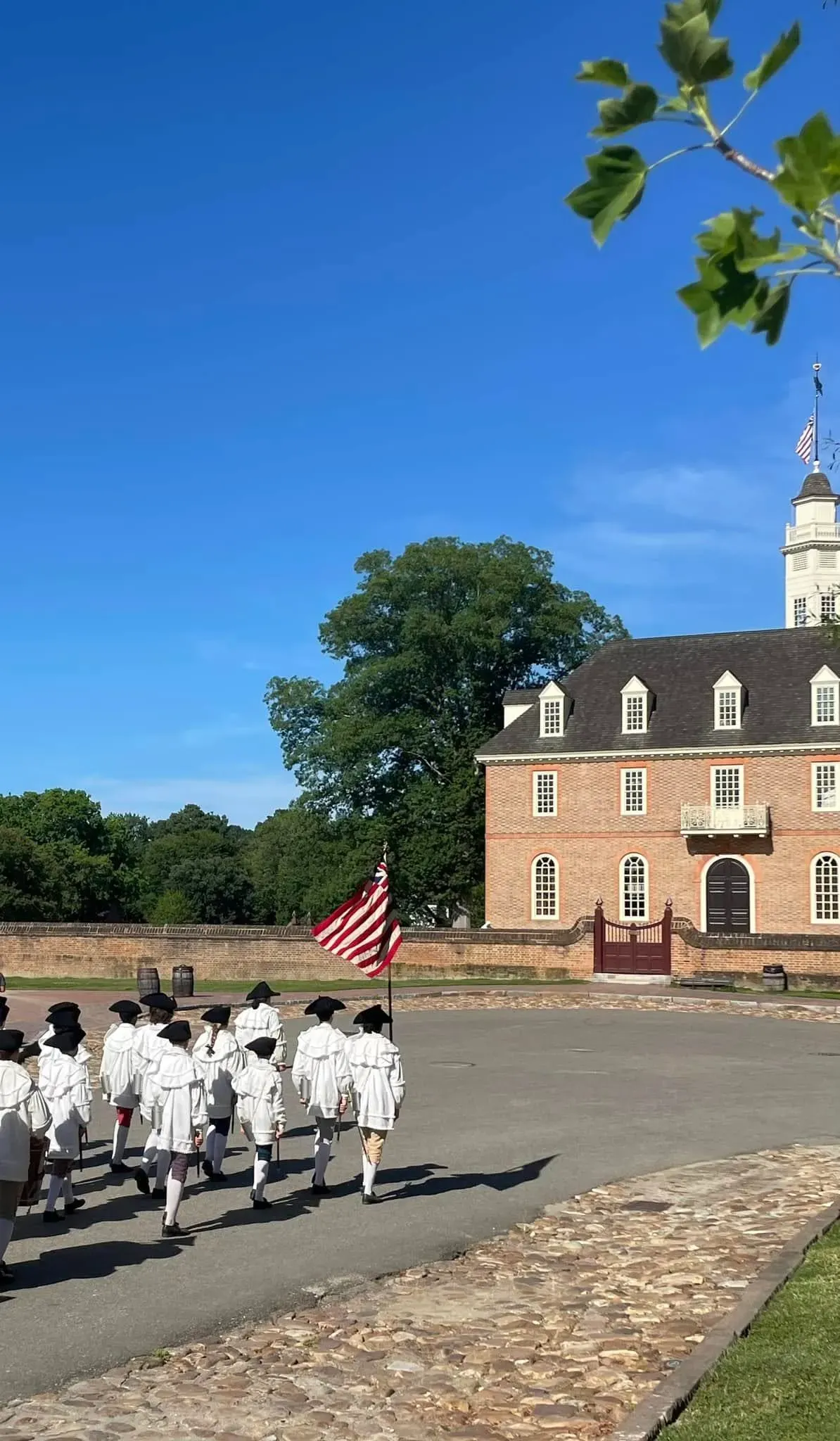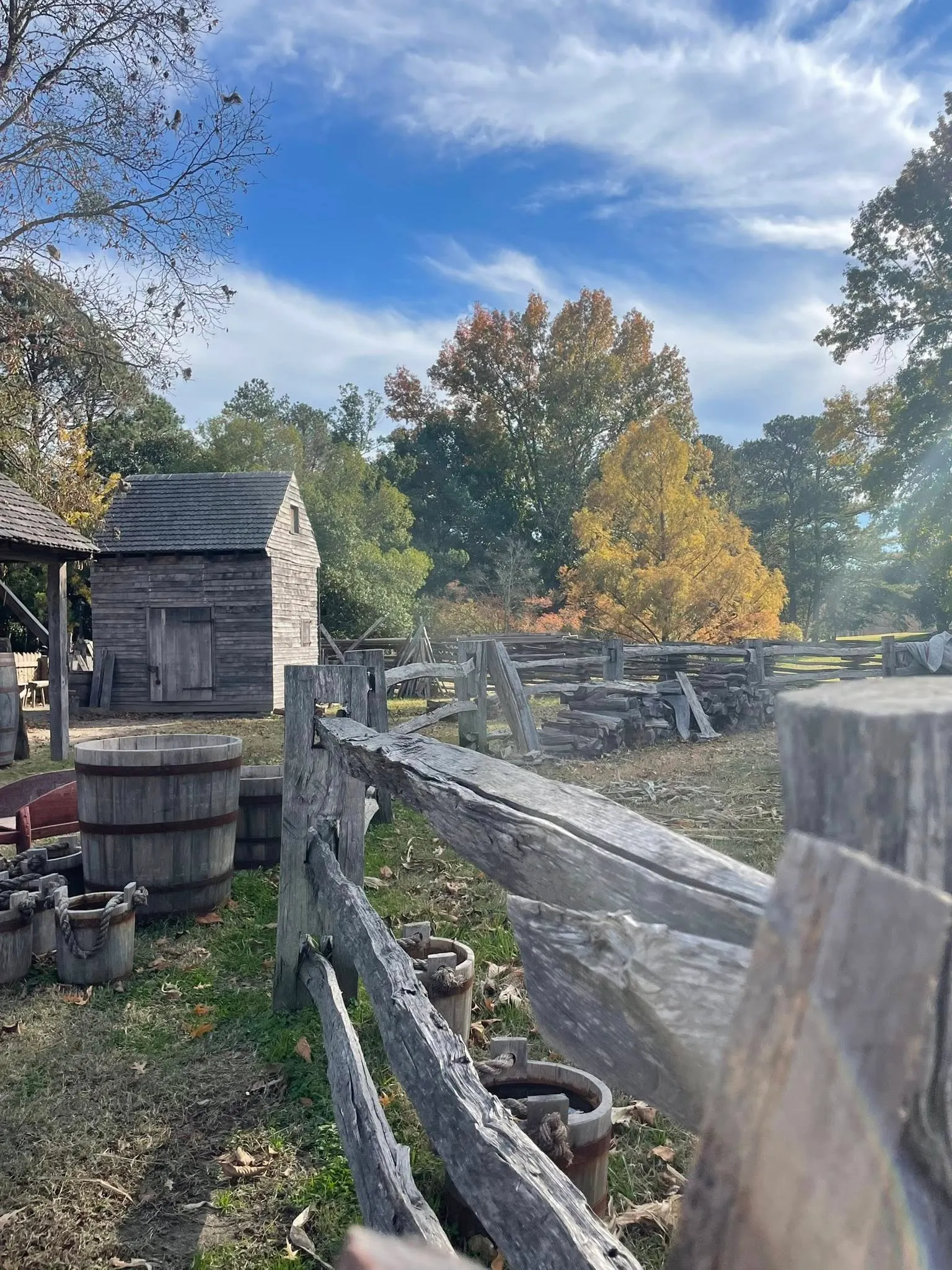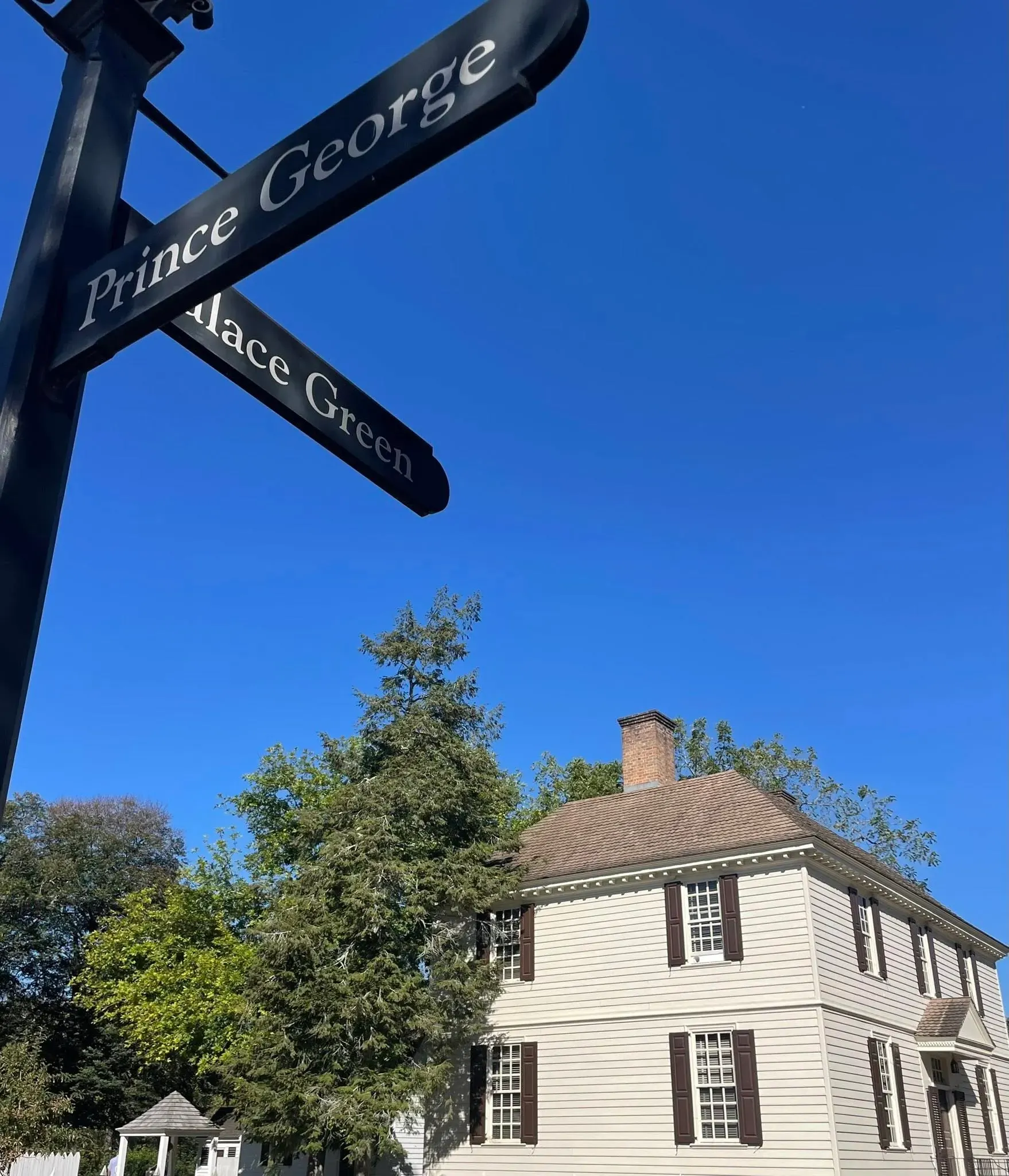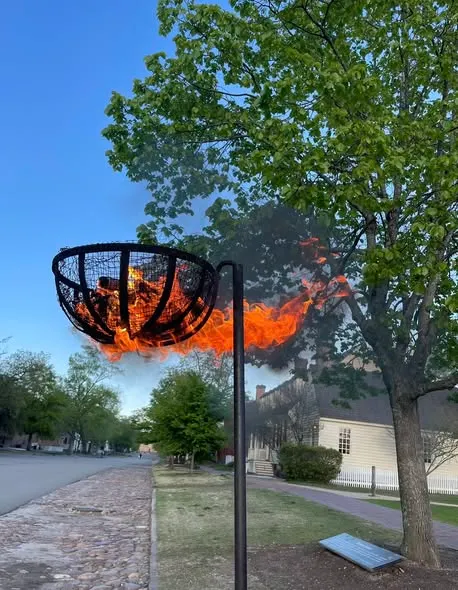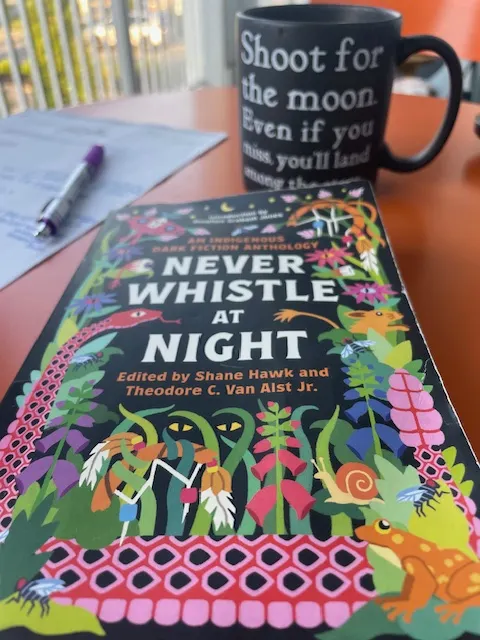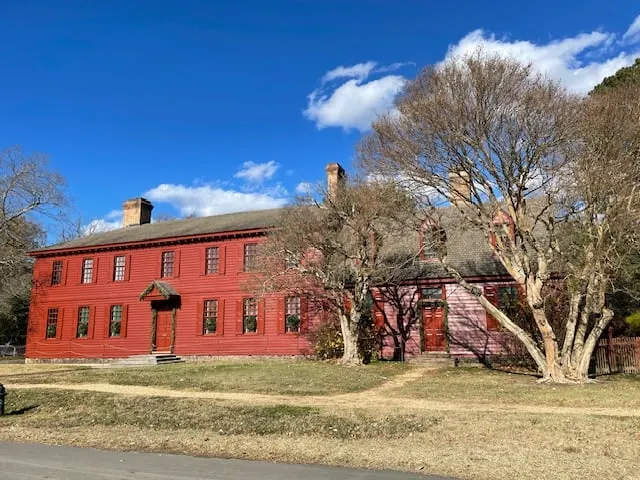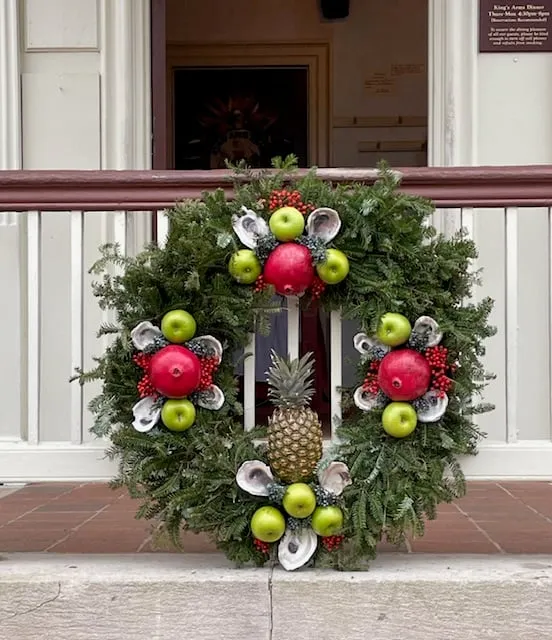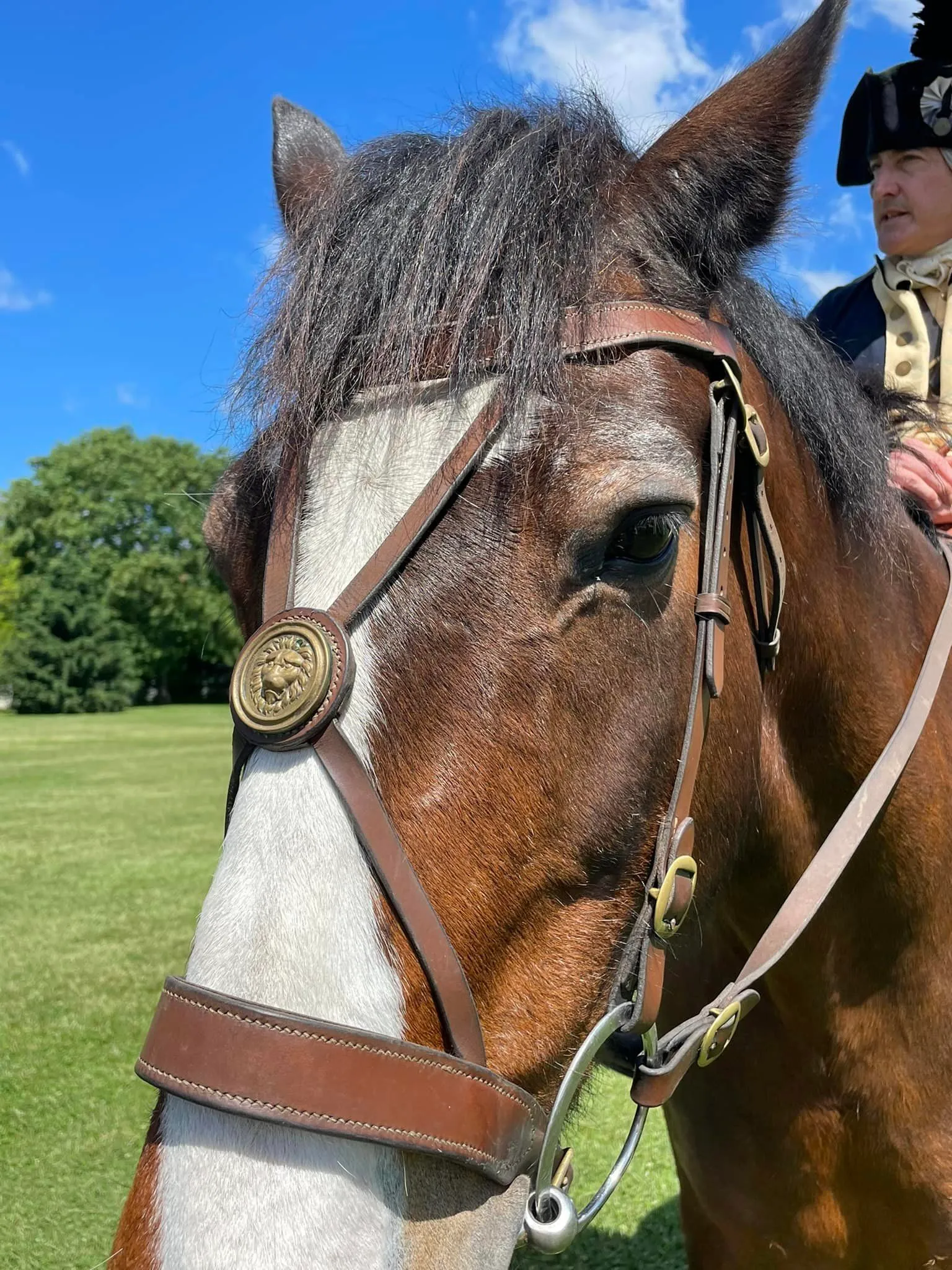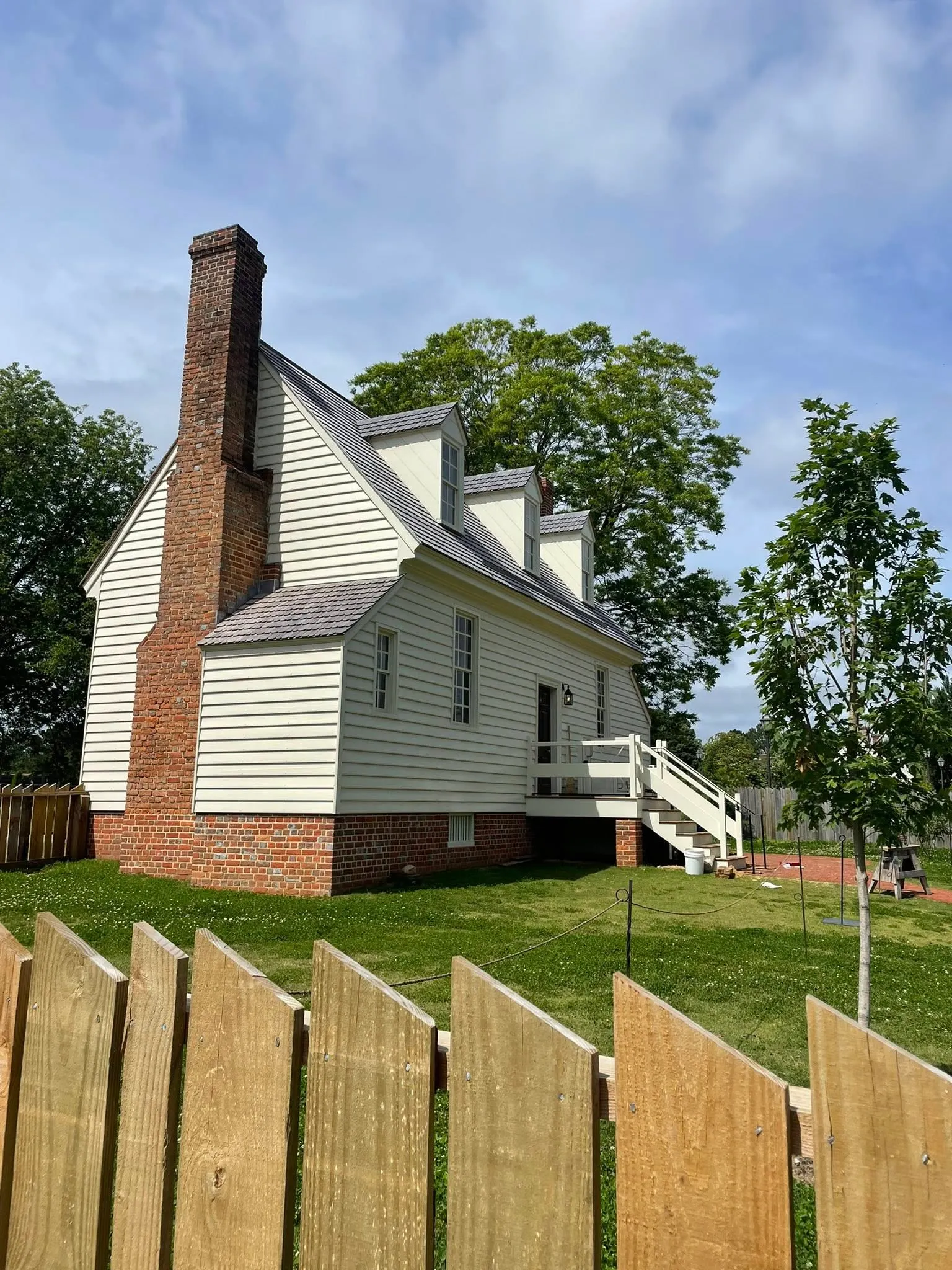The St. George Tucker House in Colonial Williamsburg has an Historic Tie to the Holiday Season
Introduction to the St. George Tucker House in Colonial Williamsburg (CW).
The St. George Tucker House is a building I'm well-familiar with. As the donor reception center, it's a place of hospitality and solace, friendship and joy. I guess those qualities are a connection to the Christmas spirit and the holiday season first and foremost!
From visits with volunteers like Brian, who we met on our first visit, to the Monday ladies: Marianne, Diane, and fellow Michigan transplant Chris, to CW staff and now-friends Karen and Lauren, this has been one of the most welcoming and interesting CW stops nearly every week for us.
Set aside the fantastic programming we get with our Nation Builders doing small group discussions, the hot drinks on a cold day and cold drinks on a hot one, and you have one of the most exciting of CW's original 89 structures.
This house is a place overflowing history. It's a peek into life in Colonial Virginia- the largest of all the original 13 colonies.
And a special thank you to Lucy Ann Smith Tucker- who lived in the home during the Civil War and protected both it and Tucker's papers so it all lives on today.
Necessary disclaimer: As a blogger, I use affiliate links sometimes! I may receive commission from purchases I share; it does not change your price but sometimes you might get a discount.
The Christmas connection.
I've been wanting to write about the St. George Tucker House for awhile, and it seems appropriate to do it on Christmas Eve morning.
It starts with a German refugee and professor at William and Mary named Charles Minnegrode. In 1842, he asked his friend, Nathaniel Beverly Tucker if he could bring a tree into the Tucker home. The idea was to carry on Mr. Minndegrode's tradition of setting up a Christmas tree for the Tucker children.... just as he would at home in Germany.
Thus: the first Christmas tree in Williamsburg, and quite possibly in Virginia. Side note: there's been a tree in the Tucker house every Christmas since 1842- even when it was closed during Covid or for renovations!
(source for Christmas tree history: detail provided in pamphlet pictured below at the St. George Tucker House as well as on tours of the home!)

Information in the St. George Tucker House about the Christmas Tree
The history of the building.
As I mentioned earlier, the St. George Tucker House is one of the known 89 original structures of CW.
It was originally built in the 1720's and faced the Palace Green. Which means it held esteem being so close to the Royal Governor's home. St. George Tucker took ownership later in the 1700's and ultimately renovated and extended the building - also moving it (can you imagine!) around the corner to face the Courthouse green. And yes, the original courthouse still exists and is used to share information about county courts in 18th century Virginia.
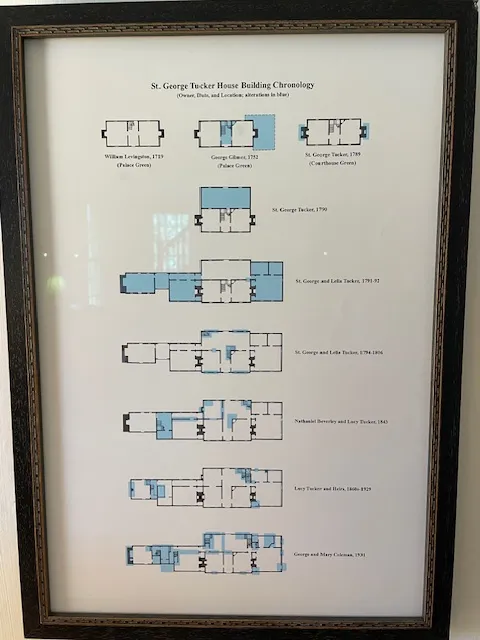
The evolution of the St. George Tucker House.
But the St. George Tucker House is about the man himself, giving us that peek into 18th century America.
The Tucker family.
The Tucker family lived in the home well into the 20th century - it's fascinating to know this! In fact, I learned that the home was saved by a Tucker wife during the Civil War - she stood fast and made sure the family home was safe for future generations.
The house was deeded to Colonial Williamsburg in the 1930s, as CW was being restored by John D. Rockefeller - who even had a residence here! The last Tucker descendent to live there was Dr. Janet (Coleman) Kimbrogh, who occupied it until her death in the early 1990's.
To this day, the height chart of generations of Tucker children is still hidden behind a door in one of the reception rooms. Descendants and guests alike can take a peek.
Also kept in a reception room: photos and portraits of family members who've made the house their home.
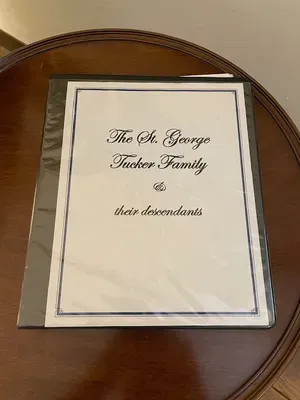
St. George Tucker, the man.
As far as the house's namesake, St. George Tucker, he was an integral "player" in Virginia history.
Like Thomas Jefferson, he studied law under George Wythe (read more about Wythe here). And like his descendent Nathaniel, Tucker had strong ties to the College of William and Mary, where he also taught law. In fact, he was active in the law school (the first one in the United States!) for many years as well as serving as a judge in Virginia.
Of note, he authored a dissertation proposing the abolition of slavery. Clearly, he was a man who thought beyond the common practices and economics of his time.
And word is, he loved tulips! It's why tulip bulbs are on the wreath displayed on the home's door during the holiday season. And I've been told, why thousands of tulips are planted on the property. (Visit in March or April- you won't be disappointed by the view!)
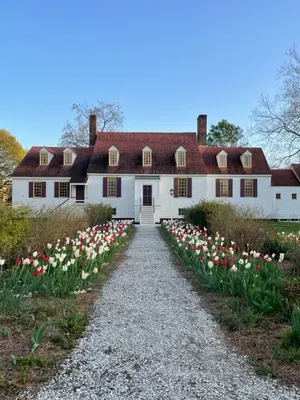
Rear view of the St. George Tucker House, spring 2023.
Family life in the Tucker House.
For fun, I had to add this little fact: St. George Tucker drafted rules of his house around 1790! They were done military-style.
He referenced his children as "privates" and adults as "officers."
The 13 rules cover everything from being prepared and timely for meals "as ordered by the Major Commandant" to stating that "no officer or is to presume to lay hands or Feet on the Furniture in the parlour."
Truly, this gives you a sense of the era's culture as well as Mr. Tucker's humor and personality.

My American history holiday season request:
Please share any holiday traditions that are popular, or even began, in your hometown or state!
Closing words from history.
St. George Tucker was born in Bermuda and his passion for securing safety for it's inhabitants is displayed in this excerpt from a letter he sent to Jefferson. Read the letter in full by clicking here. We don't often consider the impact beyond the "borders" of our American Colonies during the Revolutionary War so I found this a fascinating letter!
To Thomas Jefferson from St. George Tucker, 8 June 1775
From St. George Tucker
Williamsburg June 8th: 1775.
Sir
I must apologize to you for the Liberty I take in addressing you as a Member of the General Congress, but the Importance of the Occasion I hope will excuse it. I shall therefore without further prelude proceed to the Occasion of this Letter.
......(paragraphs preceding excerpt can be read here)
The Inhabitants are a people, who, from their immediate Connection and frequent Intercourse with the Continent, have contracted an affection for this Country. They consider the Americans as Brethren, and their Souls are animated with the same generous Ardor for Liberty that prevails on the Continent; they are most Zealous Friends to the Cause of America, and would readily join with it, in any Measures to secure those inestimable privileges now contending for; in short, they consider the Cause as their own, and with pleasure behold every step that has been taken in support of it. Their Conduct, on a former occasion, by refusing to admit the Stamps in 1765, and obliging the Stamp Master to resign his office, I think must be considered as a proof of what I have here advanced. But so incapable are they of acting in Conjunction with America, on this Occasion, however ardently they might wish to do so, that a single Ship of War might cut off all Communication whatsoever with the Continent, and reduce the Island to the most horrid state of Distress, if once obnoxious to Great Britain. It is from this apprehension that they have not declared their most cordial Concurrence in the Measures of the Congress, and adopted them for their own Government; since such a step might involve above 12,000. people in the most irretrievable Distress. Such are the Motives which have restrained their Conduct hitherto.
(the letter continues)
Did you enjoy this post? Tip me online by clicking here!

There is a huge practical disclaimer to the content on this blog, which is my way of sharing my excitement and basically journaling online.
1) I am not a historian nor an expert. I will let you know I’m relaying the information as I understand and interpret it. The employees of Colonial Williamsburg base their presentations, work, and responses on historical documents and mainly primary sources.
2) I will update for accuracy as history is constant learning. If you have a question about accuracy, please ask me! I will get the answer from the best source I can find.
3) Photo credit to me, Daphne Reznik, for all photos in this post, unless otherwise credited! All photos are personal photos taken in public access locations or with specific permission.
